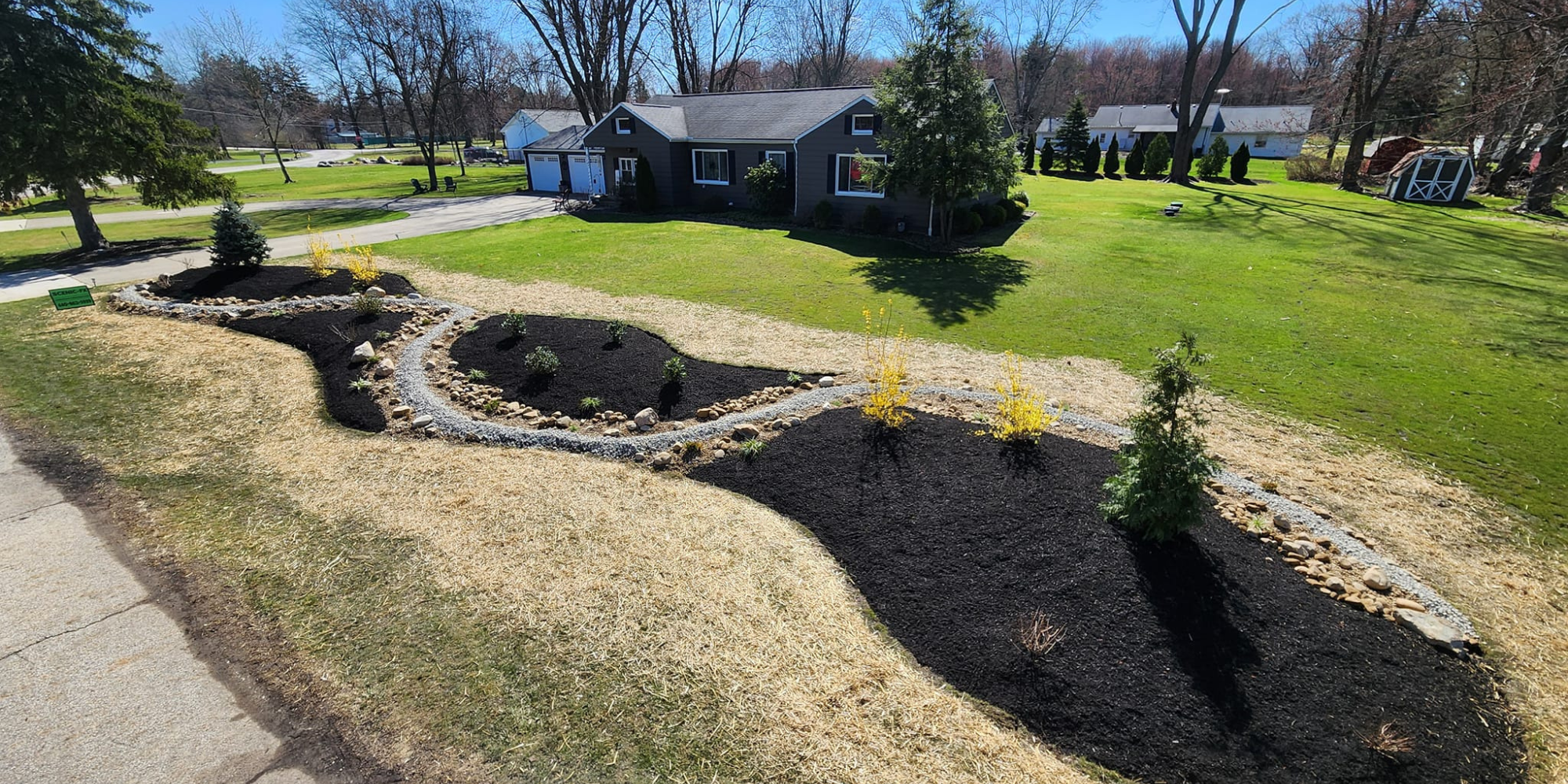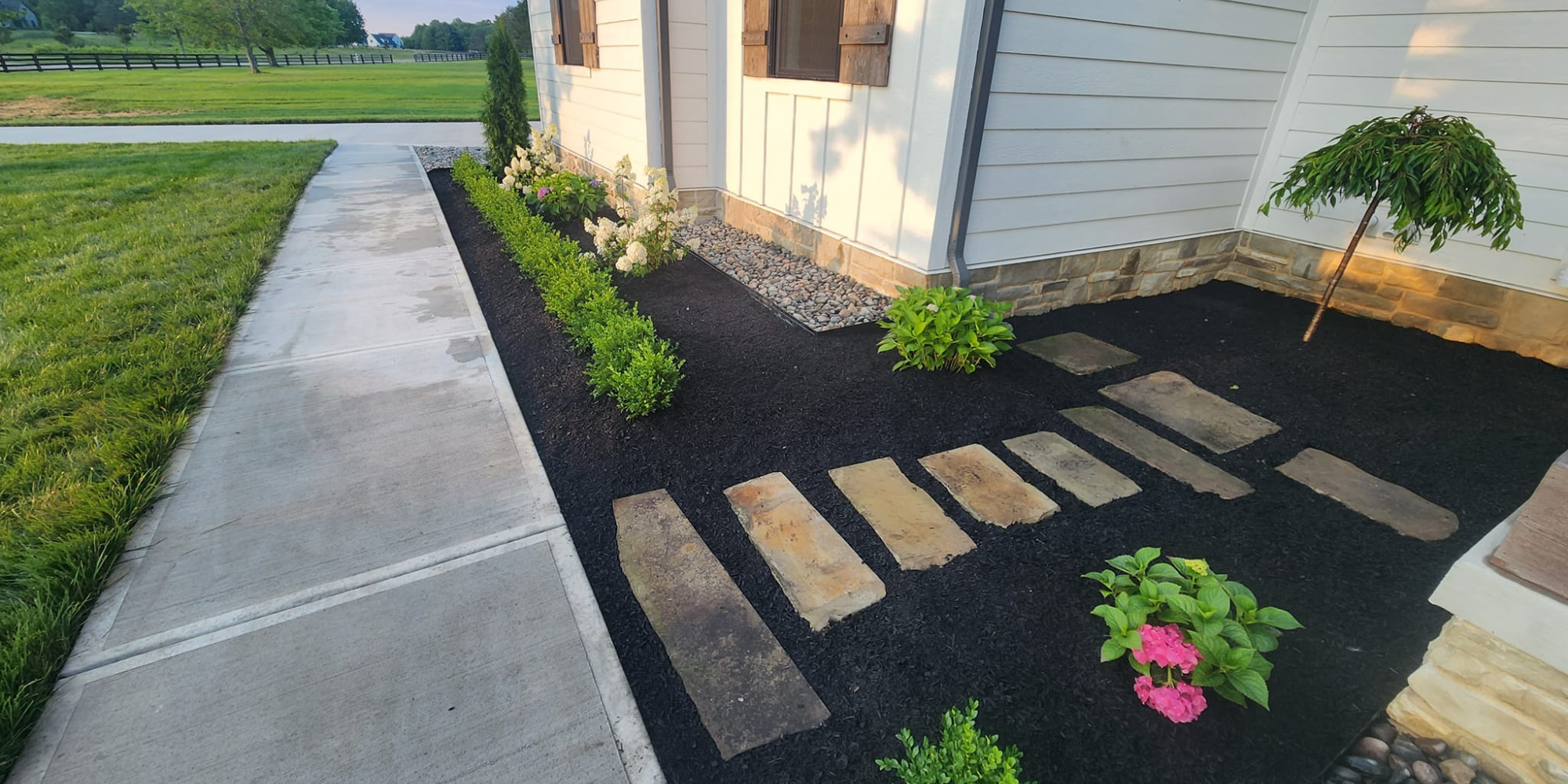As the chill of winter fades and the days grow longer, spring offers the perfect opportunity to give your property some much-needed attention. After months of cold weather, snow, and rain, your home or building may be in need of a seasonal refresh. Tackling key maintenance tasks now not only helps preserve your property’s value but also prevents costly repairs down the road. Here are eight essential property maintenance tasks to complete this spring.

1. Mulching
One of the most important tasks to tackle in spring is mulching. Mulch plays a critical role in retaining soil moisture, suppressing weeds, and regulating soil temperature. It can also enhance the appearance of your garden beds. You can choose from a variety of mulches, such as organic options like bark, wood chips, or straw, or inorganic materials like rubber or stone. The key is to apply mulch properly: aim for a 2-4 inch layer, and avoid creating “mulch volcanoes” around plant bases, as this can lead to rot. The best time to mulch is in early spring, or after the soil has warmed up, ensuring optimal benefits for your plants.
2. Cleaning Garden Beds
Cleaning garden beds is another vital step in spring maintenance. Removing debris like fallen leaves, dead plants, and twigs helps prevent fungal growth and pests. Pruning is also essential—cutting back any dead or damaged branches encourages new growth and keeps plants healthy. In addition to pruning, you may want to refresh the soil in your garden beds by turning it over to improve aeration and adding compost or organic matter to replenish the nutrients that may have been depleted over the winter.
3. Weeding
Weeding should be done early in the season to prevent weeds from taking root and spreading. Weeds compete with your plants for water and nutrients, so removing them early can make a big difference in the health of your garden. You can hand-pull weeds or use tools, and organic methods such as applying mulch or using vinegar are effective in managing weeds. Pay special attention to deep-rooted weeds, and consider using weed barriers or targeted solutions if needed.

4. Fertilizing
Fertilizing is also an important task in spring, but it’s essential to time it right. Fertilizing too early can damage plants, while fertilizing too late might not give them the nutrients they need for optimal growth. A slow-release or organic fertilizer is ideal, as it feeds plants over an extended period, reducing the risk of over-fertilization. Apply fertilizer according to the growth stages of your plants, ensuring you give them the nutrients they need at the right time.
5. Inspecting Lawn Health
If you have a lawn, inspecting its health is key. Spring is an excellent time for aerating your lawn to allow water, nutrients, and air to reach the grass roots. Aerating also helps break up compacted soil, which is common after winter. You can do this using a manual or machine aerator. If your lawn has bare spots, consider overseeding to promote thicker, healthier grass. Additionally, adjust your mowing practices by raising the mower blade to avoid cutting the grass too short, which can stress the lawn. Mowing high helps the grass develop stronger roots.

6. Preparing Outdoor Spaces
As you work on your garden, don’t forget to clean and maintain other outdoor spaces like your patio and walkways. Power-washing or scrubbing outdoor surfaces can remove built-up dirt, mildew, and moss, making your outdoor areas look fresh and inviting. Additionally, take the time to inspect and repair your fence. Look for signs of wear or damage, such as rotting wood or broken boards, and consider repainting or staining wooden fences to protect them from the elements.
7. Spring Garden Planning
Spring is also a great time to plan for new plantings. Take note of your garden’s layout and choose plants that suit your climate and soil. Spring is ideal for planting flowers, vegetables, and shrubs, so start making your planting plan and purchasing the necessary supplies. If you have containers, make sure they’re positioned in the best spots to receive enough sunlight, and check the drainage to ensure your plants don’t become waterlogged.
8. Pest Prevention
Pest prevention is another crucial part of spring maintenance. Early detection of pests like ants, aphids, or slugs can help keep your plants healthy. Consider using organic pest control methods, such as neem oil or insecticidal soap. Additionally, sealing any cracks or gaps around your home can help prevent pests from infiltrating. Regularly monitor your garden and outdoor spaces for signs of infestation to stay ahead of any potential problems.
Spring maintenance can be a lot to manage, but you don’t have to do it alone. Our team is here to take the hassle off your hands and ensure your property is in top shape for the season ahead. From detailed inspections to expert repairs and cleanup, we handle every task on the list with care and efficiency. Let us help you protect your investment and enjoy peace of mind this spring. Get in touch today to schedule your spring property maintenance services.


